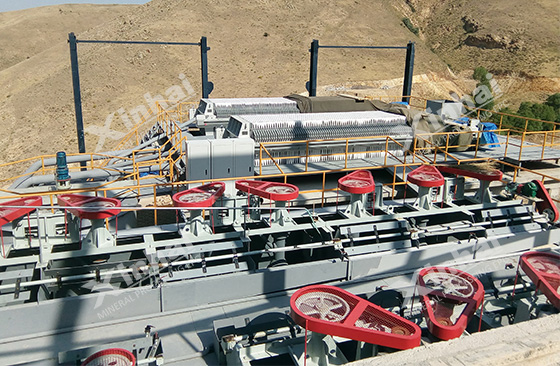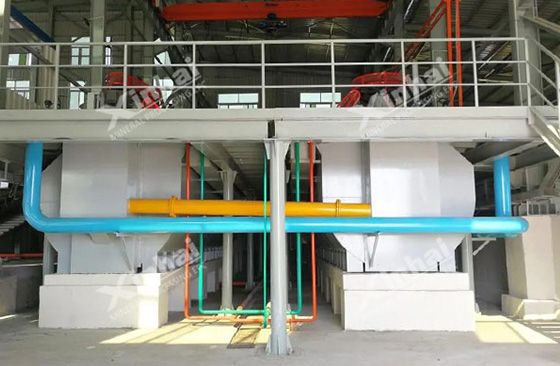The separation of nickel ores is mainly aimed at nickel sulfide ores, among which flotation is the main problem in the flotation of nickel ores during the separation of copper and nickel. Because copper is a harmful impurity in nickel ore, it is not conducive to the application of nickel in various aspects. The separation of copper and nickel can be carried out during the mineral processing and smelting process. Due to the high cost of smelting separation and the many restrictions on conditions, the flotation method is basically used for the separation of copper and nickel. The flotation of copper-nickel ore can be divided into four types: direct preferential flotation, mixed flotation without separation, and mixed flotation followed by separation flotation.
Use the table of contents below to navigate through the guide:
01Direct preferential flotation method for copper-nickel ore

The direct preferential flotation process selectively floats the copper or nickel ore without explicitly separating them. During flotation, choose an agent with better flotation performance for one of the ores to make it easier to float out. This flotation process can simplify the beneficiation process, but may result in low recovery of another ore. The advantage of this flotation method is that when the copper minerals and nickel minerals achieve a sufficient degree of monomer separation, the copper concentrate is immediately separated, and then the nickel is further recovered into a separate concentrate. The disadvantage of this method is that it is difficult to activate the nickel mineral after the nickel mineral is suppressed during copper flotation. This method is suitable for situations where the copper content in the ore is significantly greater than the nickel content and the concentrate needs to be separated separately.
02Mixed flotation method without separation of copper-nickel ore
.jpg)
This flotation process is to flotate copper and nickel at the same time, and the mixed concentrate obtained is not separated. Some general flotation reagents are used during flotation to achieve the purpose of flotating copper and nickel concentrates and obtaining mixed flotation products. This flotation process needs to be carried out under economically feasible conditions because the subsequent separation of copper and nickel requires more complex steps. The mixed flotation process without separation is generally only used when the copper content in the ore is less than nickel, and the obtained mixed concentrate can be directly sent to the smelting process. Although preferential flotation is beneficial to the separation of copper and nickel, when the production capacity of the ore dressing plant is small, a mixed flotation process without separation can be used for other proportions of copper and nickel.
03Copper-nickel ore mixed flotation followed by separation flotation metho

The mixed flotation followed by separation flotation method first flotates copper and nickel together, and then separates them through subsequent treatment steps. It may be necessary to add specific chemicals or adjust flotation conditions during the flotation process to make it easier to separate copper and nickel in the mixed flotation slurry. This method is more advanced than the direct preferential flotation process. It can obtain a higher nickel recovery rate and effectively separate the gangue minerals into the tailings. The equipment utilization in this process is also more economical. However, after mixed flotation, the copper Nickel flotation is more difficult.

The above are several methods for copper-nickel ore flotation. The choice of these flotation methods depends on the characteristics of the ore, the requirements of the target product and economic considerations. Each method has its advantages and limitations, and the choice needs to be made on a case-by-case basis. Xinhai Mining recommends that the ore dressing plant first conduct an ore dressing test analysis, determine the characteristics of the ore based on the test results, and then design the nickel ore dressing plan and configure the equipment, in order to improve the production efficiency and economic benefits of the ore dressing plant.


 marketing@ytxinhai.com
marketing@ytxinhai.com  0086 13810327080
0086 13810327080 






































































































 CHAT
CHAT MESSAGE
MESSAGE
.jpg)





